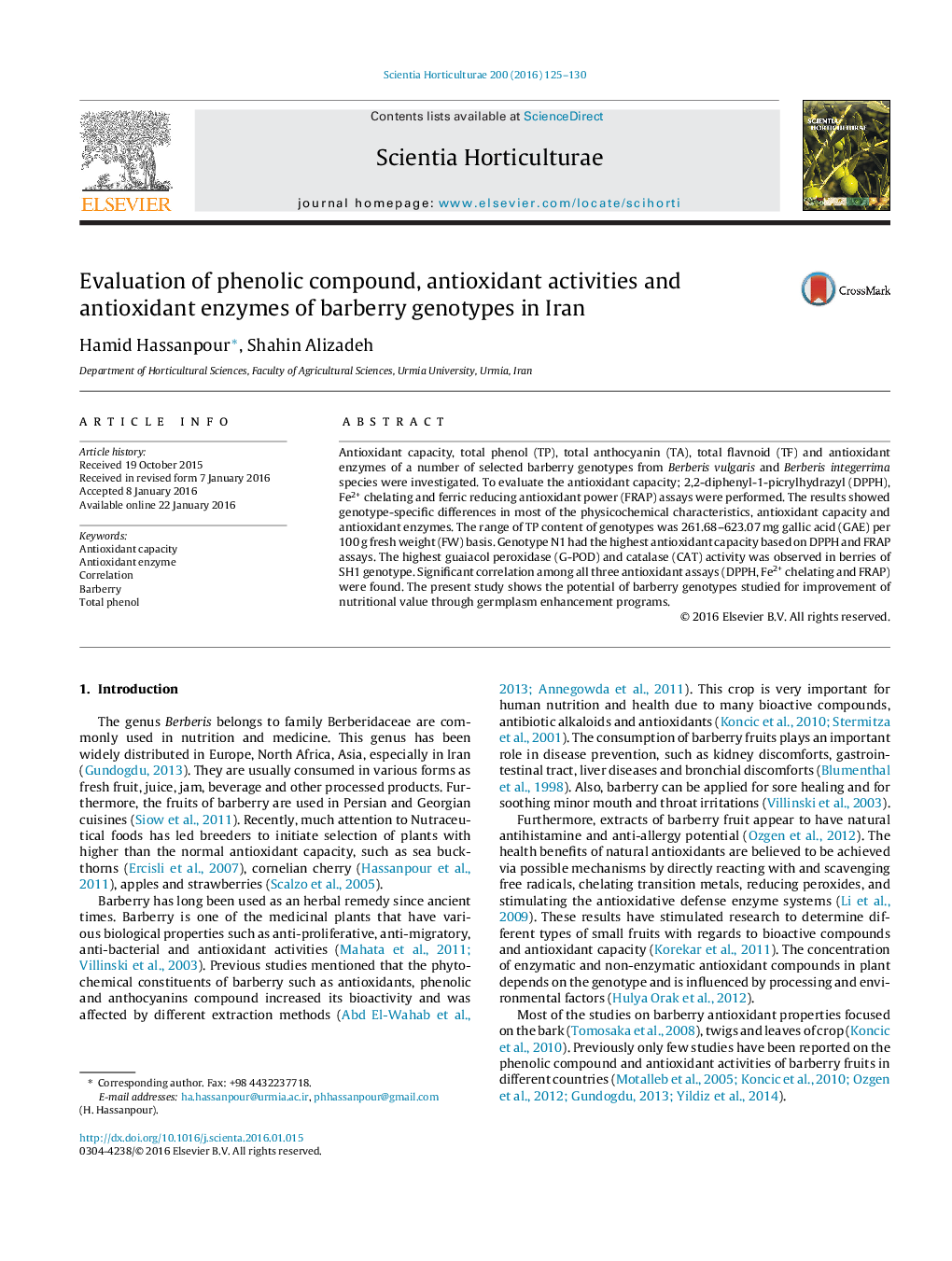| Article ID | Journal | Published Year | Pages | File Type |
|---|---|---|---|---|
| 4566067 | Scientia Horticulturae | 2016 | 6 Pages |
•The range of total phenol content of genotypes was 261.68–623.07 mg gallic acid per 100 g fresh weight basis.•Genotype N1 had the highest antioxidant capacity based on DPPH and FRAP assays.•The highest guaiacol peroxidase (G-POD) and Catalase (CAT) activity was observed in berries of SH1 genotype.•Significant correlation among all three antioxidant assays (DPPH, Fe2+ chelating and FRAP) were found.
Antioxidant capacity, total phenol (TP), total anthocyanin (TA), total flavnoid (TF) and antioxidant enzymes of a number of selected barberry genotypes from Berberis vulgaris and Berberis integerrima species were investigated. To evaluate the antioxidant capacity; 2,2-diphenyl-1-picrylhydrazyl (DPPH), Fe2+ chelating and ferric reducing antioxidant power (FRAP) assays were performed. The results showed genotype-specific differences in most of the physicochemical characteristics, antioxidant capacity and antioxidant enzymes. The range of TP content of genotypes was 261.68–623.07 mg gallic acid (GAE) per 100 g fresh weight (FW) basis. Genotype N1 had the highest antioxidant capacity based on DPPH and FRAP assays. The highest guaiacol peroxidase (G-POD) and catalase (CAT) activity was observed in berries of SH1 genotype. Significant correlation among all three antioxidant assays (DPPH, Fe2+ chelating and FRAP) were found. The present study shows the potential of barberry genotypes studied for improvement of nutritional value through germplasm enhancement programs.
